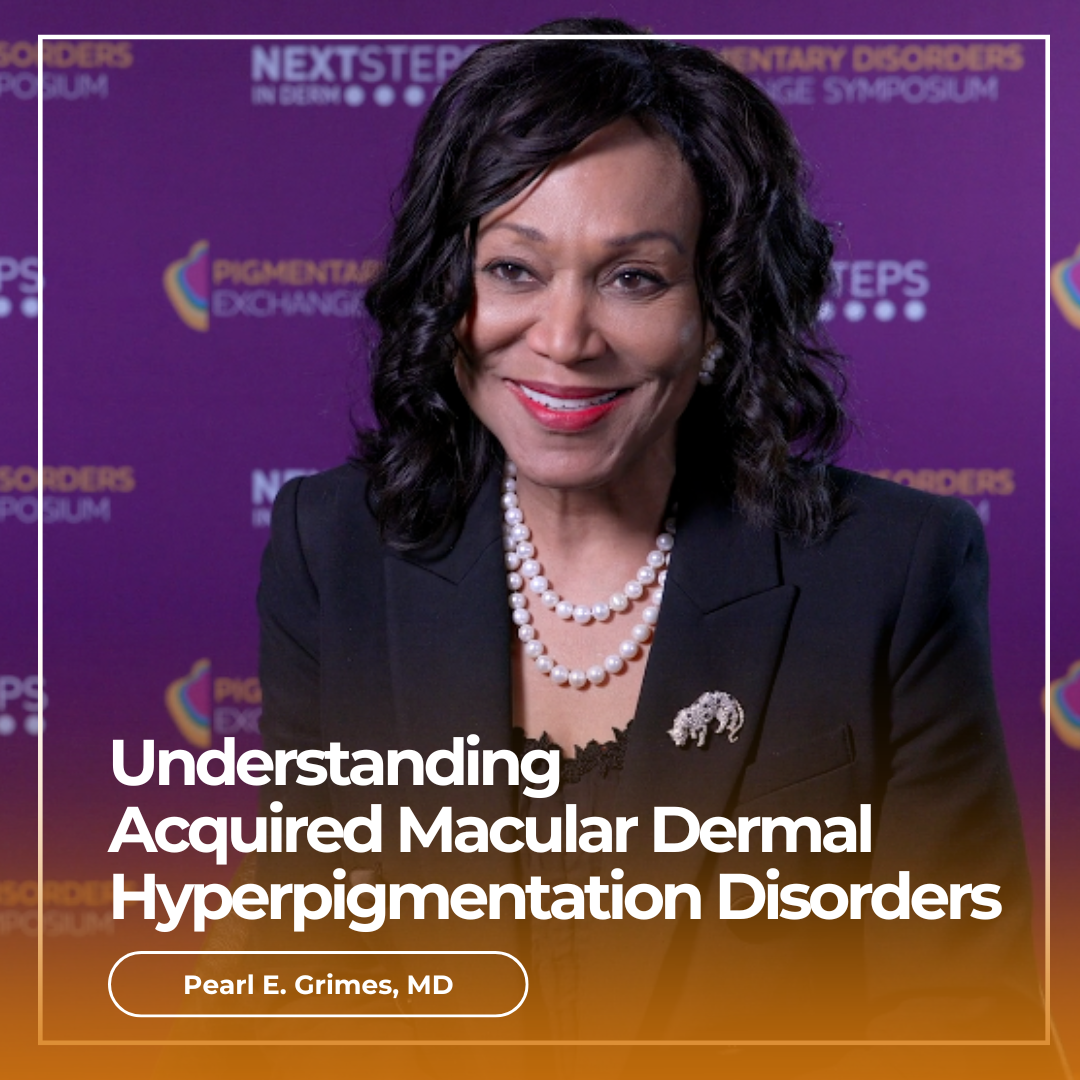Macular dermal hyperpigmentation is an umbrella term, explains Dr. Pearl E. Grimes, symposium chair and clinical professor of dermatology at the University of California, Los Angeles. In an interview with Next Steps in Derm, in partnership with Pigmentary Disorders Exchange Symposium, Dr. Grimes outlines the most common types of macular dermal hyperpigmentation and the factors that may be at play. Find out why patch testing should be your first step in treating patients with these conditions.
Further Reading
If you want to read more about macular dermal hyperpigmentation, check out the following articles published in the Journal of Drugs in Dermatology:
Hyperpigmented Macules and Patches on the Face: Exogenous Ochronosis or Lichen Planus Pigmentosus?
ABSTRACT
We present a case of a patient with a 10-year history of blue-black macules and patches on the face and an associated history of skin-lightening cream usage. The skin lightening cream contained hydroquinone, which is often associated with exogenous ochronosis (EO). Interestingly, the biopsy did not show characteristic findings of ochronosis, confusing the final diagnosis, however discontinuing the skin-lightening creams halted the progression of the patient’s skin lesions supporting a diagnosis of EO. EO presents as asymptomatic hyperpigmentation after using products containing hydroquinone. This condition is most common in Black populations, likely due to the increased use of skin care products and bleaching cream containing hydroquinone in these populations. Topical hydroquinone is FDA-approved to treat melasma, chloasma, freckles, senile lentigines, and hyperpigmentation and is available by prescription only in the US and Canada. However, with the increased use of skin-lightening creams in certain populations, it is important for dermatologists to accurately recognize the clinical features of exogenous ochronosis to differentiate it from similar dermatoses. An earlier diagnosis can prevent the progression to severe presentations with papules and nodules. We summarize the clinical presentations diagnostic features, and treatment pearls, concluding with a discussion of the differential diagnoses.
Acute Onset Linear Lichen Planus Pigmentosus of the Forehead: A Case Series
ABSTRACT
Linear lichen planus pigmentosus (LPP) of the face is a rare variant of lichen planus, with only a few cases published in the literature. It is an inflammatory condition with unknown etiology, characterized by blue-gray hyperpigmented macules, and tends to affect sun-exposed areas of the head and neck. The pathophysiology of linear lichen pigmentosus is poorly understood, though it is postulated to be caused by T-lymphocyte autoimmunity against keratinocytes. LPP more frequently affects middle age woman and skin phototypes III-VI. Treatment for linear LPP is difficult and there is no established first-line therapy; however, tacrolimus ointment, topical corticosteroids, and various systemic agents have shown to be effective in improving the appearance. Prior reports have characterized linear LPP that follows the lines of Blashko as more commonly affecting the trunk. We present three cases of linear lichen planus pigmentosus (LPP) of the forehead, a unique novel presentation of linear LPP of the face. One of our cases also provides supporting evidence for tacrolimus to be used as a preferred therapy to treat linear LPP of the face; however, more research is needed to support this claim. To our knowledge, this case series is the largest case series of linear lichen planus pigmentosus (LPP) of the forehead to be reported.
Did you enjoy this video interview? Find more here.

